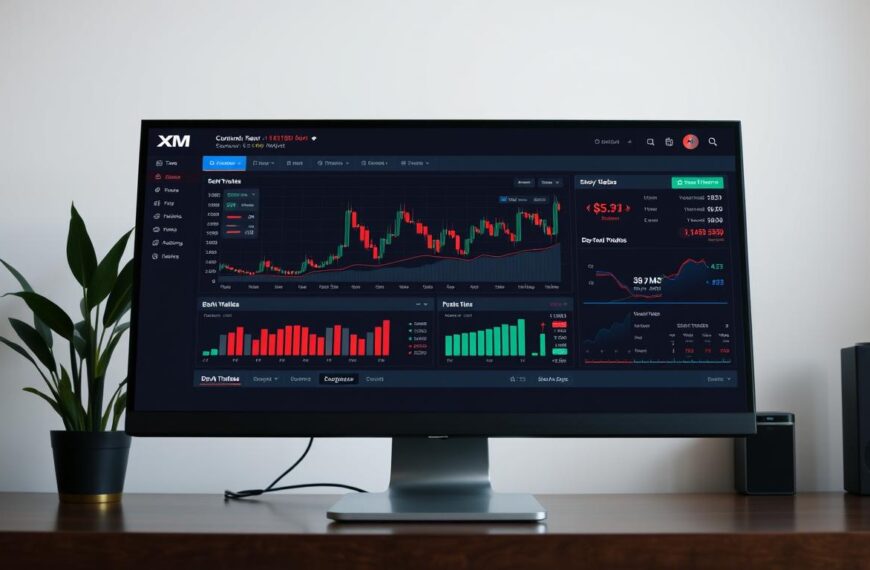As I look around, I see the amazing parts in this workshop. They show the power of Metal Additive Manufacturing. This tech has changed how we make things and opened up new possibilities.
Metal Additive Manufacturing, or Metal AM, leads the 3D printing revolution. It brings precision, efficiency, and flexibility that old methods can’t match. It’s making lighter, more complex parts for the aerospace industry and custom implants for medicine.
Key Takeaways
- Metal Additive Manufacturing is transforming industrial production with its precision, efficiency, and innovative solutions.
- This revolutionary technology is enabling breakthroughs across diverse industries, from aerospace to medical devices.
- Metal AM is pushing the boundaries of what’s possible, redefining the future of 3D printing.
- The article will explore the definition, key technologies, and the benefits of Metal Additive Manufacturing.
- It will also cover common applications, industry comparisons, challenges, and future trends in this rapidly evolving field.
What is Metal Additive Manufacturing?
Metal additive manufacturing, or metal 3D printing, is changing how we make metal parts. It builds parts layer by layer, making complex shapes possible. This is a big step up from old ways of making things.
Definition and Explanation
This method starts with a digital 3D model. It turns into a real object by fusing or melting metal powders or wires. It’s great for making precise, custom parts, especially in aerospace, cars, and medical devices.
Key Technologies Involved
The main technologies are Powder Bed Fusion and Directed Energy Deposition. Powder Bed Fusion uses a laser or electron beam to melt and fuse metal powder layers. Directed Energy Deposition melts and deposits metal wire or powder onto a substrate. These methods make it possible to create detailed, custom metal parts with high precision.
Metal additive manufacturing has many benefits. It’s not just about making complex shapes. It also uses materials better, makes production faster, and creates stronger parts than traditional methods.
Benefits of Metal Additive Manufacturing
The Metal Additive Manufacturing Process and Additive Layer Manufacturing are changing the game. They bring design freedom, better material use, and faster production. These innovations are making industries more efficient and creative.
Design Flexibility and Complexity
One big plus of Metal Additive Manufacturing is its design flexibility. It uses digital design and advanced printing to create complex shapes. This freedom lets engineers make unique, custom products.
Material Utilization Advantages
This method also saves materials. Unlike old ways that waste a lot, it uses raw materials more efficiently. This cuts costs and helps the environment, which is good for everyone.
Shortened Production Times
- It makes complex parts directly from digital designs, skipping molds and tooling. This cuts down production time a lot.
- This quickness lets manufacturers respond fast to market needs. They can bring new products to market quickly, staying ahead.
- The process is streamlined, leading to faster delivery. This makes customers happier and more loyal.
By using Metal Additive Manufacturing, companies can lead in design, material use, and speed. They stay at the cutting edge of technology and innovation.
“Metal Additive Manufacturing is revolutionizing the way we think about manufacturing, opening up a world of possibilities for designers and engineers.”
Common Applications in Industry
Metal Additive Manufacturing, also known as Metal 3D Printing or Laser Powder Bed Fusion, has changed how products are made. It has opened up new ways to solve manufacturing problems. This technology is now used in many industries.
Aerospace and Aviation
The aerospace and aviation fields were quick to adopt Metal 3D Printing. It lets them make complex, light, and custom parts. This is key for making aircraft parts, engine parts, and even whole airframes.
With Metal 3D Printing, companies can design better, use less material, and make new products faster.
Automotive Innovations
The car industry is also using Metal 3D Printing to innovate and work more efficiently. It helps make detailed engine parts, light body parts, and custom parts. This way, car makers can meet market needs faster, cut down on production time, and make cars better.
Medical Device Manufacturing
In medicine, Metal 3D Printing is a big help for making custom medical devices and implants. It’s great for making personalized prosthetics, orthopedic implants, and surgical tools. This has changed how healthcare is given.
It lets doctors make solutions that fit each patient’s needs. This improves care and life quality for patients.
As Metal 3D Printing gets better, it will be used in even more areas. It’s set to change the future of making things, bringing new ideas, efficiency, and personal touches to many fields.
Comparing Metal Additive Manufacturing with Traditional Methods
The metal 3D printing industry is growing fast. It’s key to know how Metal AM (Additive Manufacturing) stacks up against old-school methods. Looking at costs, speed, and waste, we can see its strengths and weaknesses.
Cost Considerations
Getting started with Metal AM might cost more than traditional ways. But, it can save a lot in the long run. It makes complex parts with little waste, cutting down production costs. Plus, it’s quicker, which means less time and money spent on tools and inventory.
Speed of Production
Metal AM is all about speed. It’s way faster than old methods, which take a lot of time and steps. This is great for making quick prototypes, custom parts, or small batches.
Material Waste Reduction
| Metric | Traditional Manufacturing | Metal Additive Manufacturing |
|---|---|---|
| Material Utilization | 20-50% | 90-98% |
| Scrap Material | 50-80% | 2-10% |
Metal AM is a big win for the environment and your wallet. It uses up to 98% of the material, leaving just a little waste. This means less scrap and lower costs for businesses.
“Metal Additive Manufacturing is revolutionizing the way we approach manufacturing, offering unparalleled design flexibility, material efficiency, and production speed.”
As Metal AM grows, comparing it to old methods will shape the future of manufacturing.
Challenges Facing Metal Additive Manufacturing
The Metal Additive Manufacturing industry is growing but faces many challenges. These include technical issues, regulatory hurdles, and concerns about sustainability.
Technical Limitations
One big challenge is the technical limits of current processes. We need better surface finishes, faster build speeds, and bigger parts. Also, making the process reliable and consistent is hard, leading to quality problems.
Regulatory Compliance Issues
The industry must deal with a complex set of rules. This is especially true in areas like aerospace and medical devices. Meeting these standards is time-consuming and expensive.
Sustainability Concerns
Despite its green potential, Metal Additive Manufacturing has sustainability issues. The process uses a lot of energy, and dealing with metal powders and recyclable parts is a problem. We need to find ways to make it more sustainable.
Beating these challenges is key for Metal Additive Manufacturing’s future. As it grows, we must work together to solve these problems. This will help make the process more sustainable and effective.
Leading Companies in Metal Additive Manufacturing
The Metal 3D Printing industry is booming with new companies leading the way. These companies are making big strides in Metal 3D Printing and Powder Bed Fusion technologies.
Market Pioneers and Innovators
Big names like GE Additive, EOS, and Trumpf have been at the forefront for a long time. They keep pushing the limits of what’s possible. They develop new systems and materials for different industries.
Newcomers like Desktop Metal and Markforged are also making waves. They offer easy-to-use and affordable metal 3D printing solutions. This makes the technology more accessible to everyone.
Notable Projects and Collaborations
There are many notable projects and partnerships in metal additive manufacturing. For example, GE Additive’s work with Airbus has led to making complex aerospace parts. This shows how Metal 3D Printing can make design and parts more flexible.
Partnerships between companies and research groups are also key. They help improve materials and processes. The partnership between EOS and the Fraunhofer Institute, for instance, has brought new insights into Powder Bed Fusion techniques.
| Company | Specialization | Notable Collaboration |
|---|---|---|
| GE Additive | Metal 3D Printing Systems | Airbus |
| EOS | Powder Bed Fusion Technology | Fraunhofer Institute |
| Desktop Metal | Accessible Metal 3D Printing | N/A |
| Markforged | Innovative Metal 3D Printing Solutions | N/A |
These companies and their partnerships show the Metal 3D Printing industry’s growth and potential. They are opening up new possibilities in design, production, and innovation.
Future Trends in Metal Additive Manufacturing
The Metal Additive Manufacturing industry is growing fast. New materials, advanced technologies like AI, and more market opportunities are changing it. These changes are making the field more exciting and diverse.
Advancements in Materials Science
New materials are being developed for Metal Additive Manufacturing. Scientists are working on metal alloys, ceramics, and composites. These new materials will help make parts stronger, more complex, and functional.
Integration with AI and Machine Learning
AI and machine learning are set to change Metal Additive Manufacturing. They will make designing and producing parts more efficient. AI and ML can analyze data in real-time, improving quality and saving costs.
Expanding Market Opportunities
Metal Additive Manufacturing is becoming more versatile. It’s being used in aerospace, automotive, healthcare, and more. Directed Energy Deposition is also growing, making large, complex metal parts more efficiently.
The future of Metal Additive Manufacturing looks bright. With new materials, advanced technologies, and more uses, it’s set to grow a lot. This field is changing manufacturing and opening up new possibilities for industries around the world.
Education and Skills for Metal Additive Manufacturing
The field of Metal AM is growing fast. It needs skilled people with the right knowledge. Taking courses and getting certifications can help you succeed in this field.
Relevant Courses and Certifications
There are many ways to learn about Metal AM. You can get degrees or certificates from schools or through industry programs. These programs cover topics like Laser Powder Bed Fusion and material science.
Many professional groups and training centers also offer courses. They teach about Metal AM technologies and best practices.
- Bachelor’s or Master’s degrees in Additive Manufacturing or related fields
- Certifications from organizations such as the Additive Manufacturing Users Group (AMUG) and the Additive Manufacturing Center of Excellence (AM-CoE)
- Online courses and webinars from industry leaders and educational platforms
Importance of Interdisciplinary Knowledge
Good Metal AM experts know a lot. They understand materials science, design, and how to make things. This mix of knowledge helps them solve problems and create new ideas.
“The ability to seamlessly integrate technical, design, and manufacturing knowledge is key to unlocking the full potential of Metal AM.”
The need for Metal AM experts is growing. By learning more and thinking across disciplines, you can be ready for this exciting field.
Conclusion: The Future Landscape of Metal Additive Manufacturing
Metal Additive Manufacturing is changing the game in many industries. It’s making things faster and more efficient. This tech is set to change how we make things in the future.
Summary of Key Points
We’ve looked at how Metal Additive Manufacturing works and its benefits. It’s used in many fields, from aerospace to medical devices. We’ve also talked about its challenges and the leaders in this field.
There are new trends emerging that will shape its future. These trends are exciting and will help the technology grow.
Vision for the Industry’s Evolution
The future of Metal Additive Manufacturing looks bright. New materials and tech like AI will help it grow. We’ll see more complex products made faster and with a focus on being green.







